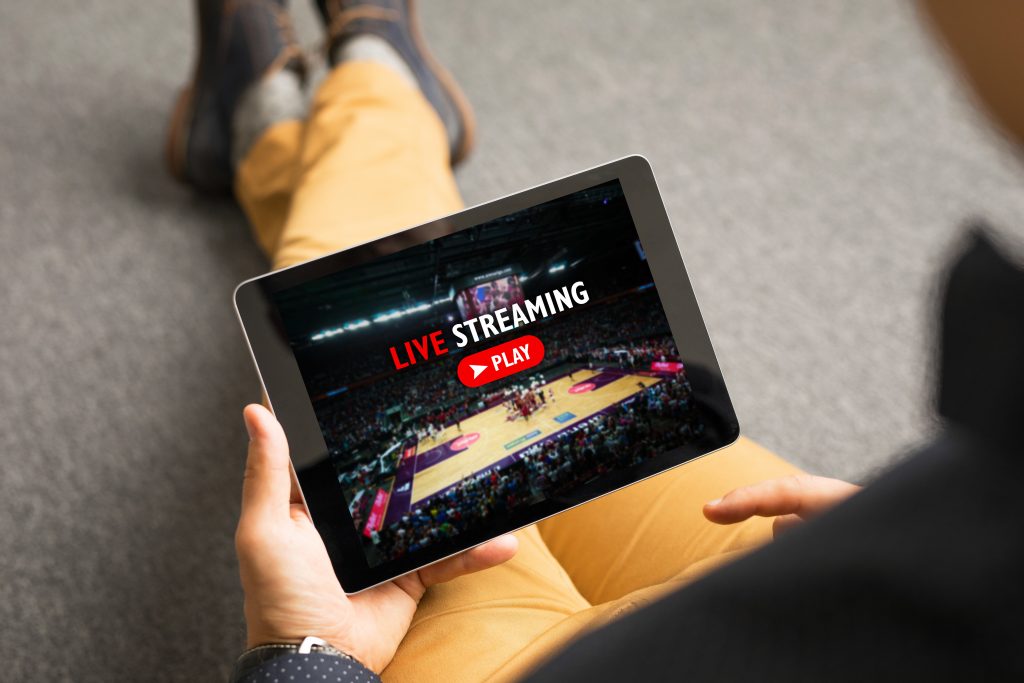Guest post written by Johnny Crosskey, SEO & Content Specialist, The Sports Facilities Companies.
In recent years, live streaming has exploded into the American consciousness thanks to services like Netflix and Hulu. And more than movie and TV fans are gaining the benefit of this technology with services like Amazon Prime and YouTube TV offering NFL games and other events. While not yet a national draw, live streaming is becoming more prevalent in youth sports as well. There is now a host of service providers streaming tournament action for those not in attendance or coaches who want game film to provide more detailed instruction to young athletes.
How It Works:
When considering the livestreaming options for youth sports, venues need to decide the physical set-up and which of three deployment methods to implement onsite.
With live streaming, video footage, in this case we’ll call it data, is captured via a camera and then compressed. The data is converted into a format that can be recognized by smart phones, tablets, laptops, or smart TVs in a process called encoding. In order for these huge data files to be viewed seamlessly over an internet network, they must be broken down into smaller segments. The final step is for a worldwide set of servers called content distribution networks (CDNs), to distribute the content to devices attempting to gain access.
There are three deployment methods for live streaming being implemented in youth sports venues. Each method allows venues to charge users a subscription fee for using their service. The first method is for venues to invest in equipment from a livestreaming hardware vendor, including cameras, software, storage servers, etc., to facilitate a livestreaming solution. This includes purchasing the cameras and the software to facilitate a live streaming solution. While the upfront cost can be extensive, owning the equipment allows you keep all subscription fee revenues. This option is viable if you are in the pre-development or development phase of a venue project because it can be integrated into the infrastructure of the facility.
In the second option, live stream vendors partner with venues to develop the infrastructure and provide equipment, including cameras and software in exchange for a portion of subscription revenue. This option offsets some of the cost of installing a live streaming solution but still works best if implemented in the facility pre-development or development phases.
The third option is to receive streaming services for a provider that owns all the hardware and uses a cloud platform to stream events.
Benefits:
The primary benefits for livestreaming youth sports include viewing live action sports from anywhere in the world, purchasing clips that can be used on social media, and capturing video for instruction. Wearable technology sensors can be placed on athlete’s uniforms that can track information such as their speed, position, or distance (to home base for example) and display it within the live feed. Other stats, such as points scored in basketball or saves made in hockey can also be updated in real time and displayed in the stream using augmented reality (similar to NFL’s “Next Gen Stats”, which can be seen in AR using the NFL app.)
This info can be tied into sponsorship activation opportunities as well. For example, a message offering the user a free food item each time a home run is hit can be displayed as soon as the baseball or softball crosses the fence.
Different camera angles can be employed as a part of live streaming as well, giving users a variety of points of view. These combined innovations add depth to viewing experience for guests.
Barriers To Entry:
While live streaming is well-established within entertainment circles and emerging in pro sports, finding an audience and, subsequently, ROI in youth sports has been challenging. While the youth sports market is huge, it’s mostly focused on watching events in person for free. Using AR and Internet of Things-related enhancements are a part of an effort to offer more than just live game action and to build a larger audience for these services.
Livestreaming Technology In Action:
While the ability to livestream Major Leagues Baseball games has become commonplace through the MLB Network, Fox, ESPN, and TBS, it’s harder to find footage of the stars of tomorrow. While it may be less relevant to the average fan, this footage is of heightened importance for scouts looking to evaluate emerging talent. The COVID-19 pandemic made visiting players in developmental leagues such as the Appalachian League much more challenging. MLB partnered with live streaming vendor Pixellot to develop a live streaming network to broadcast each game. The system is automated, eliminating the need for physical operators, and uses AI to detect when game action is taking place. While the live streaming system caters heavily to scouts by providing breakdowns of specific plays and a bevy of stats, it can be accessed by fans for free from any device.






